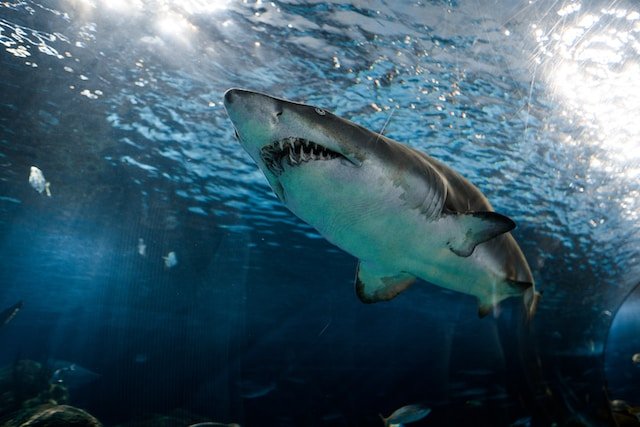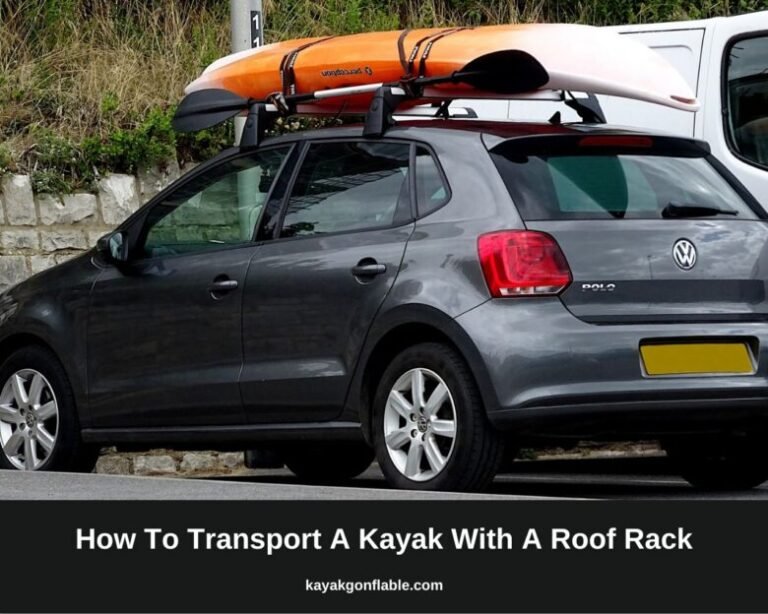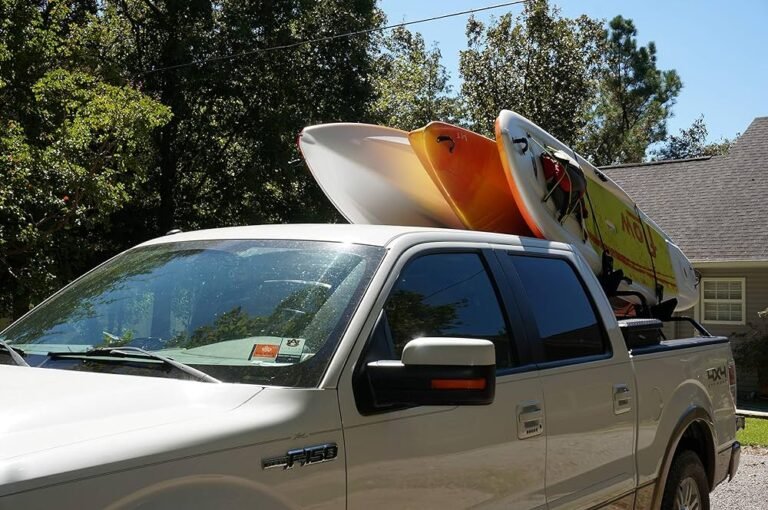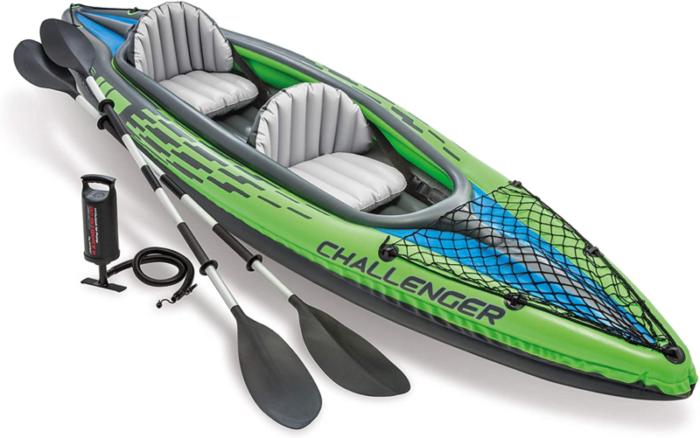Quel âge faut-il avoir pour faire du kayak ?
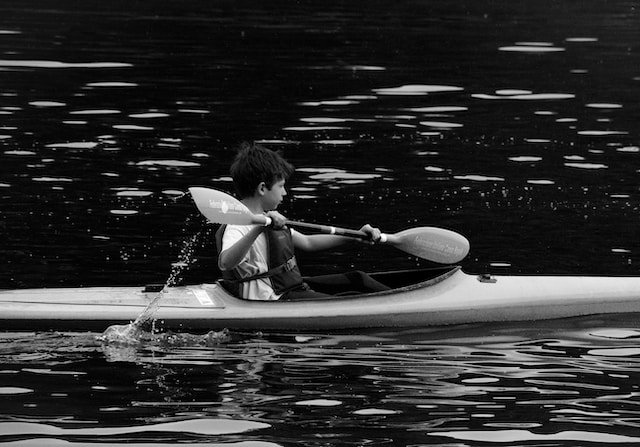
Kayaking is a watersport that not only connects children with nature but also promotes physical fitness and instills a sense of adventure from a young age. Whether you’re gliding peacefully across a serene lake or navigating the rush of whitewater rapids, kayaking offers a unique experience that connects you to the water and the great outdoors. But as exciting as kayaking is, there are important safety considerations that come into play, especially when it comes to age.
General Age Guidelines and Recommendations
When it comes to kayaking, age doesn’t just refer to how old someone is, it’s about their ability to handle the kayak, their understanding of water safety, and their physical readiness. While there’s no strict minimum age set in stone, various organizations and experts have established general age guidelines to help parents, guardians, and first-timers decide when it’s appropriate for children and adults to hit the water.
No Minimum Age
In general, there is no legal minimum age to kayak. This flexibility allows even young children to start paddling at a very early age, but it’s crucial to ensure they are using equipment suitable for their size and strength. Many kayaks are designed specifically for children as young as 5 to 8 years old, providing a safe introduction to the sport.
Children (5 to 8 Years)
At this age, kids can begin to explore kayaking with child-sized kayaks designed for their smaller frames. Safety is the top priority here, and it’s important for children in this age group to start learning the basic paddling techniques as well as fundamental water safety practices. This stage is usually all about getting them comfortable on the water and teaching them to stay safe, often under close adult supervision.
What to Expect:
- Basic paddling techniques
- Understanding water safety rules
- Supervision by an adult or experienced kayaker
- Short, calm paddles in a controlled environment like a lake or pond
Children (9 to 11 Years)
As children grow, they can gain more independence on the water. At this stage, they can comfortably paddle short distances, typically up to half a mile, on kayaks designed for their size. While they are still encouraged to kayak with an adult or a guide, their ability to handle themselves on the water improves.
What to Expect:
- Paddling up to half a mile on calm waters
- Enhanced understanding of kayaking techniques
- Increased confidence and responsibility on the water
- Continued adult supervision and presence
Children (12 and Older)
By the age of 12, many kids are ready to transition to larger kayaks, which offer more speed and maneuverability. With the proper guidance and safety measures, they can paddle longer distances, sometimes a mile or more, on a variety of water conditions, including lakes and rivers with mild currents.
What to Expect:
- Independence in paddling larger kayaks
- Ability to paddle up to a mile or more
- Growing understanding of environmental factors (wind, current, etc.)
- Ability to navigate basic river conditions (depending on experience)
Maturity and Physical Development
Beyond just age, a child’s physical and emotional maturity plays a significant role in determining when they’re truly ready to kayak. While some children may have the strength and skills to paddle at a young age, others may require more time to develop the coordination and stamina needed.
Factors to Consider:
- Maturity: Can the child follow instructions, stay focused, and understand basic safety rules?
- Strength: Is the child physically strong enough to handle the paddles and maneuver the kayak?
- Swimming Ability: Being a confident swimmer is a key skill when participating in kayaking, as it adds an extra layer of safety.
- Understanding Safety: Does the child know what to do in case of capsizing, how to properly wear a life jacket, and the importance of staying close to an adult or guide?
There is no fixed “right age” for kayaking, but guidelines based on maturity, physical strength, and water safety skills help ensure that kids and adults alike can enjoy the sport at the right time for their abilities.
Factors Influencing Age Appropriateness
When determining if kayaking is suitable for a child, several factors come into play beyond just age. Each aspect, from swimming ability to the type of water conditions, can make or break the kayaking experience, especially for younger paddlers. Let’s break down the most important factors that influence whether someone is ready to hit the water.
Swimming Ability
One of the most critical factors in kayaking is swimming ability. Kayaking involves being on the water, and the reality is that things can go wrong. Even if you’re in calm waters, accidents can happen, and being able to swim or at least float in the water is essential for all kayakers, especially children.
Why It Matters:
- Children should be able to swim or float to stay safe if they capsize or encounter rougher water conditions.
- Even if kids aren’t strong swimmers, wearing a properly fitted life jacket can provide extra safety, but they must still know basic water survival skills.
- In challenging water conditions (such as rapids or strong currents), swimming becomes even more critical.
Physical Size and Strength
While kayaking is an accessible sport, it does require a certain level of physical strength to control the kayak and the paddle. Children need to have sufficient upper body strength to effectively paddle and manage the size of the kayak. A child who’s too small may struggle to control a larger kayak or paddle, which can lead to safety issues.
Why It Matters:
- Kids need to have the physical ability to maneuver the kayak, especially if they are using adult-sized paddles.
- Kayaks come in various sizes, so it’s important to match the kayak size to the child’s physical development and ability to paddle efficiently.
- Proper paddle sizing is crucial for comfort and effectiveness, and should match the child’s height and strength.
Cognitive Development and Judgment
Kayaking requires more than just physical ability, it also involves sound judgment and the ability to assess risks. Children must be able to follow instructions, make decisions, and understand the potential dangers of kayaking. A child’s cognitive development and capacity for judgment play a huge role in determining whether they can handle kayaking safely.
Why It Matters:
- Understanding safety instructions is essential, especially when it comes to things like wearing a life jacket, paddling techniques, and what to do in an emergency.
- A child must have the ability to make quick decisions in changing conditions (e.g., if they get caught in a current or encounter unexpected obstacles).
- The ability to recognize and avoid risks (such as capsizing) and make sound judgments about water conditions is critical for safety.
Supervision
Regardless of age, supervision is crucial when kayaking, especially for children. The American Canoe Association and other organizations recommend that children under the age of 12 always kayak with an adult present. An appropriate adult-to-child ratio should be maintained to ensure children receive adequate guidance and safety measures.
Why It Matters:
- Even experienced young kayakers need supervision to make sure they’re paddling correctly, staying safe, and following rules.
- An adult can step in to guide the child in case of any issues, such as navigating tricky water conditions or correcting poor paddling techniques.
- Supervision ensures that children aren’t pushing their limits too soon and that they’re always in a safe environment.
Conditions de l'eau
The water conditions are a significant factor in determining whether a child can safely kayak. Younger children should start in calm, protected waters such as lakes or ponds with minimal wind and current. More challenging conditions, like fast-moving rivers or the open sea, require a much higher level of skill, maturity, and experience.
Why It Matters:
- Calm, flat water is ideal for beginners, as it reduces the risk of capsizing and allows children to focus on learning basic paddling skills.
- Strong currents, waves, or winds can quickly become overwhelming and dangerous for young kayakers who lack the strength, skills, or judgment to handle such conditions.
- When children are ready to progress to more challenging waters, they should have sufficient experience, maturity, and supervision to navigate them safely.
Type of Kayaking
The type of kayaking plays a significant role in determining age appropriateness. Recreational kayaking is the most beginner-friendly, while activities like whitewater kayaking or touring involve higher stakes and stricter requirements. The more intense the activity, the higher the skill level, physical fitness, and maturity required.
Why It Matters:
- Recreational Kayaking: This is the most suitable form for young beginners, as it involves calm waters and low-intensity paddling.
- Touring Kayaking: Often done on longer trips in open water, this type requires more stamina, navigation skills, and an understanding of tides and weather conditions.
- Whitewater Kayaking: Reserved for more advanced paddlers, this involves navigating rapids and requires excellent physical strength, sharp judgment, and prior experience. It’s not recommended for younger children due to its inherent dangers.
Type de kayak
The type of kayak you choose can also make a big difference in determining a child’s readiness. Tandem kayaks, where an adult and child paddle together, are a great option for introducing younger kids to kayaking. In a tandem kayak, the adult can have control while the child learns the ropes and gets used to the experience.
Why It Matters:
- Tandem kayaks provide an opportunity for children to experience kayaking without being solely responsible for controlling the craft.
- The adult in the tandem kayak can step in to help steer, paddle, or provide guidance if needed, while the child learns and participates.
- For younger children, sit-on-top kayaks are another great option because they’re stable and easy to get in and out of, offering more security for those still learning.
Avantages du kayak pour les enfants
Développement de la force et de l’endurance
- La croissance musculaire: Kayaking engages a variety of muscle groups, including the arms, shoulders, back, and core. As children paddle, they gradually build strength and endurance, which not only enhances their kayaking skills but also contributes to their overall physical fitness
- Santé cardiovasculaire: La nature rythmée du kayak offre un excellent entraînement cardiovasculaire. Des séances régulières de kayak contribuent à améliorer la santé cardiaque et pulmonaire, augmentant ainsi l'endurance et le niveau d'énergie d'un enfant.
Améliorer la confiance en soi et l'estime de soi
- Sentiment d'accomplissement: Maîtriser les compétences du kayak et relever de nouveaux défis sur l'eau donne aux enfants un sentiment d'accomplissement. Ceci, à son tour, renforce leur confiance en soi et leur estime de soi, favorisant ainsi une image positive de soi chez l’enfant.
- Fixer des objectifs: Le kayak encourage l’établissement d’objectifs. Les enfants apprennent à se fixer des objectifs pour chaque voyage, qu'il s'agisse d'atteindre une destination précise ou d'améliorer leur technique de pagayage. Atteindre ces objectifs renforce leur confiance en leurs capacités.
Amélioration de l’équilibre et de la coordination
- Coordination affinée : Équilibrer un kayak sur l’eau nécessite un jeu délicat de mouvements. Les enfants perfectionnent naturellement leur équilibre et leur coordination à mesure qu’ils apprennent à diriger leur kayak dans diverses conditions aquatiques.
- Motricité: Les techniques de pagaie exigent un contrôle précis du kayak. Cela améliore non seulement leur motricité globale, mais affine également leur capacité à réagir rapidement aux situations changeantes.
Développer le travail d’équipe et les compétences en communication
- Kayak tandem : De nombreux enfants commencent à faire du kayak en kayak tandem. Les tandems nécessitent une coopération et une communication avec un partenaire. Cette expérience leur enseigne la valeur du travail d’équipe et d’une communication efficace pour naviguer efficacement.
- Expéditions de groupe : Les excursions en groupe en kayak avec des amis ou des membres de la famille encouragent les enfants à travailler ensemble pour atteindre des objectifs communs, renforçant ainsi leurs compétences interpersonnelles.
Réduire le stress et l'anxiété grâce aux activités de plein air
- Connexion avec la nature : Le kayak plonge les enfants dans le monde naturel, offrant une pause par rapport aux exigences de la vie moderne. Être entouré d’eau, d’animaux sauvages et des doux sons de la nature peut avoir un effet apaisant et réduire le stress.
- Aventure en plein air: Les activités de plein air comme le kayak constituent un excellent moyen d’évacuer l’énergie et le stress refoulés. L’effort physique et l’exposition aux milieux naturels contribuent à réduire l’anxiété et à favoriser le bien-être mental.
Encourager le sentiment de communauté et d’amitié
- Implication de la communauté: Les clubs et communautés de kayak procurent un sentiment d’appartenance aux enfants. Ils ont la chance de rencontrer des pairs partageant les mêmes idées et partageant leur passion pour le kayak, favorisant ainsi un sentiment de communauté.
- Amitiés durables : Les expériences et aventures partagées du kayak mènent souvent à des amitiés durables. Les enfants nouent des liens avec d’autres personnes qui partagent leur enthousiasme pour ce sport nautique passionnant.
Safety Considerations for Different Age Groups
When it comes to kayaking, safety is the number one priority, regardless of age. But the safety measures that are required vary depending on the participant’s age, maturity, and experience. From children to adults, ensuring the right safety precautions are in place makes a huge difference in preventing accidents and maximizing enjoyment on the water.
Adapted Safety Measures
Safety gear, like life jackets, is essential for every kayaker, but the type and fit of the gear should be tailored to the specific age group. Children, especially, need equipment that suits their size and physical capabilities.
- Properly Fitting Life Jackets: Life jackets should always be worn by every participant. For children, it’s crucial that the life jacket fits well and is appropriate for their weight and size.
- Why It Matters:
- A properly fitted life jacket is vital to keep a kayaker safe, especially if they fall overboard or encounter rough waters.
- Life jackets also help young kayakers feel more comfortable and confident on the water, knowing that they have a safety net.
- Why It Matters:
- Water Conditions and Understanding: Young children and beginners must have an understanding of water conditions, like currents or wind, before heading out. For those new to kayaking, sticking to calmer waters and practicing in safe conditions is crucial.
- Adherence to Legal Requirements: Many areas have strict safety laws and regulations, such as the requirement to wear a US Coast Guard-approved life jacket. These legal requirements should always be followed, ensuring the safety of participants and helping rental companies reduce liability.
Safety in Rentals
When it comes to renting kayaks, safety is a major concern for rental companies. Rental companies typically enforce age limits and specific safety requirements to minimize the risk of accidents and ensure that participants can handle the water conditions safely.
Why It Matters:
- Rental companies provide equipment that has been checked for safety, but they also ensure that participants have the maturity and skills necessary to operate the kayak.
- Most rental companies will not rent kayaks to minors without an adult accompanying them, ensuring that young paddlers are properly supervised.
Importance of Life Jackets
A life jacket is not just a piece of gear, it’s a lifesaver. Regardless of the kayaking activity, wearing a US Coast Guard-approved life jacket is mandatory for all participants.
Why It Matters:
- Life jackets ensure that kayakers stay afloat in the event of a capsized kayak or an unexpected fall into the water. This is especially important for beginners or children, who may not have the swimming skills to survive in open water.
- Life jackets are not optional; they are a fundamental part of kayaking safety, and ignoring this requirement can lead to serious consequences.
Specific Needs for Children
For younger kayakers, special considerations should be taken into account to make sure they have a safe and enjoyable experience on the water.
- Safety Training: Before children take to the water, they should receive basic kayaking and water safety training. This includes understanding how to properly paddle, how to steer, and how to get back in the kayak if they fall out.
- Why It Matters:
- This training ensures that children can react appropriately in an emergency and are less likely to panic in challenging situations.
- Why It Matters:
- Clear Communication: Kids should always be instructed on the dangers they may encounter, including how to communicate with their guide or supervising adult in case something goes wrong. Adults should have clear, simple instructions for children at all times.
- The Right Gear: Ensuring that children are using appropriate safety gear, such as properly fitted life jackets and helmets (for whitewater kayaking), is critical. The gear should fit well and be checked before every outing.
- Why It Matters:
- Equipment that is too loose or too tight can become a hazard, hindering mobility and comfort, which could lead to accidents.
- Why It Matters:
Best Practices for Kayaking with Children
Start Small and Supervised
The key to introducing children to kayaking is to start with short, manageable trips in calm, protected waters. These conditions will allow kids to build confidence, practice basic skills, and get used to the experience without overwhelming them.
Why It Matters:
- Small, gentle waters (such as lakes or calm rivers) offer a safe environment for kids to get comfortable with the kayak.
- Keeping initial kayaking trips short helps avoid fatigue or frustration, making the experience enjoyable rather than exhausting.
- Supervision is essential at this stage to guide children through the learning process, ensuring they are safe and confident on the water.
Proper Gear and Equipment
Ensuring that children have the right gear is one of the most important safety considerations when kayaking. A well-fitted personal flotation device (PFD) and age-appropriate equipment are crucial for both comfort and safety.
Why It Matters:
- Properly Fitted PFD: A life jacket that fits snugly and is designed for a child’s size is essential to keeping them afloat in case of a fall.
- Look for US Coast Guard-approved PFDs specifically designed for children, as they offer the best support and buoyancy.
- Appropriate Paddles: Make sure children have paddles that match their height and strength. A paddle that’s too large or too small can make paddling difficult and frustrating.
- Comfortable, age-appropriate kayaks designed for children are also important to ensure they can easily control and maneuver the boat.
Safety Training
Before venturing out on the water, it’s highly recommended that children take basic kayaking safety courses. These courses teach essential skills like how to paddle, steer, and handle the kayak, as well as how to respond in an emergency.
Why It Matters:
- Children who understand the basics of kayaking and water safety are more likely to stay calm in unexpected situations, reducing the risk of panic.
- These courses often cover how to wear a PFD properly, how to enter and exit the kayak, and how to react in case the kayak capsizes.
- Safety training builds essential skills that help children become more independent and confident on the water as they grow.
Education and Communication
Teaching children about water safety is vital before heading out on any kayaking trip. Beyond just the basics of paddling, kids need to understand the risks involved in being on the water and the rules they need to follow.
Why It Matters:
- Safety Rules: Teaching kids how to recognize and respect water conditions (e.g., currents, waves) and when to call it quits for the day is critical to their safety.
- Clear Communication: Before each trip, have a conversation about the importance of staying close to adults, listening to instructions, and recognizing potential hazards.
- Assessing Risks: Help children understand what might be risky on the water (e.g., fast-moving currents, unexpected weather changes) and how they should respond in these situations.
Make It Fun
While safety is crucial, kayaking with children should also be fun! Make the experience enjoyable and engaging to promote positive associations with the activity and encourage kids to continue paddling in the future.
Why It Matters:
- When kayaking is fun and engaging, children are more likely to develop a lifelong interest in the sport.
- Use games or challenges (e.g., “let’s race to that tree” or “see who can paddle the longest in a straight line”) to help keep kids entertained while practicing their paddling skills.
- Praise children for their efforts, no matter how small, to build their confidence and make them feel accomplished.
Regardless of age, safety should always come first. Parents, guardians, and anyone responsible for a young kayaker’s safety should assess not only their physical ability but also their maturity. A child who may physically be capable of paddling a kayak may not yet have the judgment or experience to assess risks in more challenging waters.
Kayaking is fun and rewarding, and can be enjoyed by individuals of all ages, from young children to adults. By adhering to safety guidelines, encouraging responsible decision-making, and ensuring that everyone is properly prepared for the activity, kayaking can be an activity that everyone, young and old, can safely enjoy for years to come.

